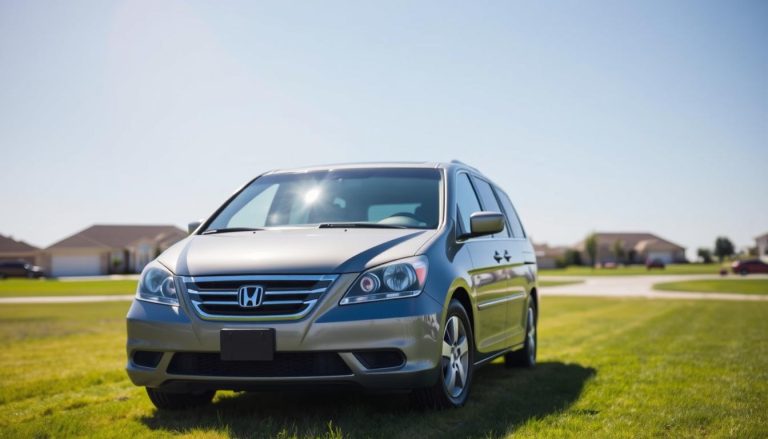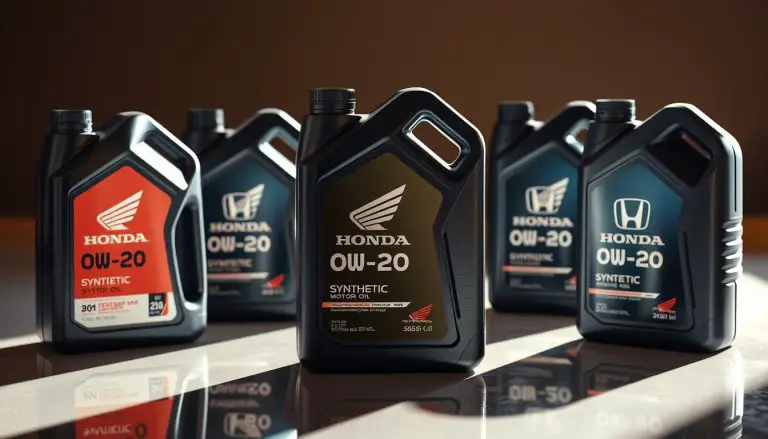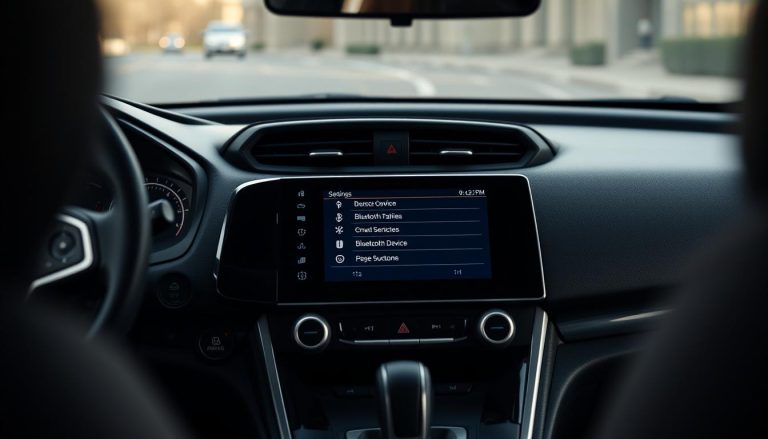The Honda Civic transmission is a critical component of the vehicle’s performance, and the D3 gear plays a significant role in its functionality. For drivers, understanding the D3 gear’s purpose can enhance their driving experience and improve overall vehicle handling.
The D3 gear is a part of the automatic transmission system in Honda Civic vehicles, designed to provide a balance between power and control. When engaged, it allows drivers to have more control over gear shifts, particularly in situations that require more engine braking or when driving in hilly terrain.
By grasping the concept of the D3 gear and its functionality, drivers can optimize their use of the Honda Civic’s transmission system, leading to a more efficient and enjoyable driving experience.
Key Takeaways
- The D3 gear is a feature of the Honda Civic’s automatic transmission system.
- It provides drivers with more control over gear shifts.
- Engaging D3 gear can be beneficial in certain driving conditions.
- Understanding the D3 gear enhances the overall driving experience.
- The Honda Civic transmission is designed for performance and efficiency.
What is D3 on a Honda Civic: Understanding Your Gear Shifts
The Honda Civic’s D3 gear is designed for specific driving conditions, providing a unique blend of power and control. When navigating through various terrains or driving situations, understanding the role of D3 can significantly enhance your driving experience.
D3 is one of the gear positions available in the automatic transmission of Honda Civic models. It is essential to comprehend its function and how it differs from other gear settings to maximize the vehicle’s performance and efficiency.
Basic Definition of D3
D3, or third gear, is a setting that limits the automatic transmission to using only the first three gears. This limitation can be beneficial in certain driving conditions, such as steep inclines or when driving in heavy traffic.
By restricting the transmission to lower gears, D3 provides more engine braking and control, which can be particularly useful when descending steep hills or navigating through congested city streets.
D3 vs. Other Gear Positions (D, D2, S, L)
Understanding the differences between D3 and other gear positions is crucial for effective driving. Here’s a comparison of the various gear settings:
| Gear Position | Description | Best Used For |
|---|---|---|
| D | Drive; uses all available gears | Normal driving conditions |
| D3 | Limits transmission to first three gears | Steep inclines, heavy traffic, or when engine braking is needed |
| D2 | Limits transmission to first two gears | Very steep inclines or heavy towing |
| S (or D4 on some models) | Second or fourth gear, depending on the model; provides more engine control | Sporty driving or hilly terrain |
| L | Low gear; typically first gear | Extremely steep inclines or heavy loads |
As shown in the table, each gear position is designed for specific driving conditions. D3 stands out as a versatile option, offering a balance between power and control.
The Honda Civic Transmission System Overview
The intricacies of the Honda Civic’s transmission system reveal the sophistication and complexity of modern automotive engineering. The transmission is a critical component that enables the vehicle to achieve optimal performance, efficiency, and reliability.
Automatic Transmission Basics
Automatic transmissions are designed to automatically change gear ratios as the vehicle moves, freeing the driver from having to manually shift gears. This is achieved through a complex system of sensors, hydraulic controls, and planetary gearsets.
The basic components of an automatic transmission include the torque converter, planetary gearset, and hydraulic control system. The torque converter acts as a fluid coupling between the engine and transmission, allowing the engine to continue running while the transmission is in gear.
Honda’s Specific Transmission Design
Honda’s transmission designs are known for their reliability and performance. The company has developed various transmission technologies, including the Continuously Variable Transmission (CVT) and the traditional automatic transmission with fixed gear ratios.
Honda’s CVT is designed to provide smooth acceleration and improved fuel efficiency by allowing the engine to operate within its optimal RPM range. In contrast, traditional automatic transmissions offer a more conventional driving experience with fixed gear ratios.
Differences Across Civic Model Years
The transmission system in Honda Civics has evolved over the years, with different model years featuring distinct transmission designs and technologies. For instance, some older models may have a traditional 4-speed automatic transmission, while newer models might be equipped with a CVT or a more advanced 6-speed automatic transmission.
| Model Year | Transmission Type | Notable Features |
|---|---|---|
| 2016-2018 | CVT | Improved fuel efficiency, smooth acceleration |
| 2019-2021 | 6-Speed Automatic | Enhanced performance, manual shift mode |
| 2022-Present | CVT with Sport Mode | Combines efficiency with sporty driving experience |
Understanding these differences is crucial for maintaining and troubleshooting the transmission system in your Honda Civic.
How D3 Functions in Your Honda Civic
The functionality of D3 in a Honda Civic is deeply rooted in its transmission operation and engine interaction. When you engage D3, you’re activating a specific mode that alters how your vehicle’s transmission behaves under various driving conditions.
Technical Operation of Gear Limitation
D3 gear limitation is a feature that restricts the automatic transmission from shifting beyond the third gear. This limitation is crucial for certain driving scenarios, such as navigating steep inclines or controlling speed during downhill drives. By limiting the gear shifts, D3 helps in maintaining optimal engine RPM, thereby enhancing control over the vehicle.
Engine performance is directly tied to the gear limitation feature. By preventing the transmission from shifting into higher gears, D3 ensures that the engine stays within a specific RPM range, which is beneficial for situations requiring more power or control.
Engine and Transmission Interaction
The interaction between the engine and transmission in D3 mode is finely tuned to provide the best possible performance under the given constraints. The engine control unit (ECU) works in tandem with the transmission control unit (TCU) to optimize gear shifts, ensuring that the engine operates within an ideal power band.
Engine Braking Mechanism
One of the key benefits of using D3 is its ability to facilitate engine braking. Engine braking occurs when the engine is used to slow down the vehicle, rather than relying solely on the brakes. By keeping the transmission in a lower gear, D3 allows the engine to help slow the vehicle, reducing wear on the brakes and improving control, especially on downhill slopes.
In summary, the D3 gear in your Honda Civic is a powerful tool that, when used correctly, can significantly enhance your driving experience by providing better control and performance in specific driving conditions.
When to Use D3 While Driving
Knowing the right moments to shift into D3 while driving your Honda Civic is crucial for optimal control. The D3 gear is designed to provide additional engine braking and control in specific driving conditions.
Optimal Driving Conditions for D3
D3 is particularly useful in situations that require more control over your vehicle’s speed and gear shifts. Some of the optimal conditions for using D3 include:
- Driving on steep hills or mountains: D3 helps in maintaining a lower gear, providing more engine braking and reducing the risk of overheating your brakes.
- Towing trailers or heavy loads: Using D3 while towing can help manage the additional weight and reduce strain on your vehicle’s transmission.
- Adverse weather conditions: In rain, snow, or icy conditions, D3 can provide better control over your vehicle by limiting gear shifts and maintaining a suitable engine RPM.
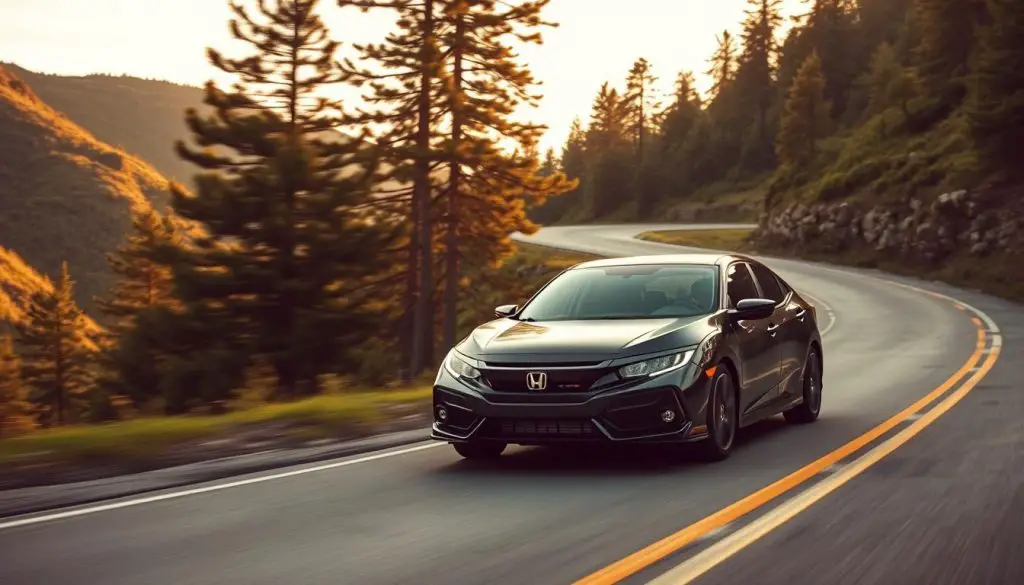
Downhill Driving Applications
One of the most significant benefits of using D3 is during downhill driving. By engaging D3, you can utilize engine braking to control your vehicle’s speed, reducing the need for constant braking. This not only helps in maintaining control but also reduces wear on your brake system.
When driving downhill, especially on steep or long descents, shifting into D3 can help keep your vehicle at a safe speed without relying heavily on the brakes.
Situations to Avoid Using D3
While D3 is beneficial in certain conditions, there are situations where it’s best to avoid using it:
- Normal highway driving: D3 is not necessary for regular highway driving, as it can lead to higher engine RPMs and potentially decrease fuel efficiency.
- City driving in light traffic: In normal city driving conditions without heavy loads or towing, using D3 is generally not required.
- Driving on flat terrain: On flat roads without the need for additional engine braking, it’s best to use the standard drive (D) position.
Understanding when to use D3 and when not to use it can significantly enhance your driving experience and the longevity of your vehicle’s transmission.
Benefits of Using D3 in Specific Situations
The D3 gear in a Honda Civic offers several benefits in specific driving situations. When used appropriately, D3 can enhance control, improve safety, and even contribute to better fuel economy under certain conditions.
Driving on Hills and Mountains
One of the primary benefits of using D3 is when driving on hilly or mountainous terrain. By limiting the gear shift to lower ratios, D3 provides engine braking, which helps control speed on steep descents. This can be particularly useful when driving down a long, steep hill, as it reduces the need for constant brake application, thereby preventing brake overheating.
For instance, a driver navigating through the mountains can engage D3 to maintain a safe speed without relying heavily on the brakes. This not only enhances safety but also reduces wear on the brake system.
City Driving and Traffic
In city driving conditions, especially in heavy traffic, D3 can be beneficial. It allows drivers to have more control over their vehicle in stop-and-go traffic by providing more engine braking. This can lead to a smoother driving experience and reduced fatigue.
“Using D3 in heavy traffic can make a significant difference in how your vehicle handles. It’s like having an extra layer of control,” says a seasoned driver.
Towing and Heavy Loads
When towing heavy loads or trailers, engaging D3 can provide additional control and stability. It helps in managing the increased weight and reduces the strain on the transmission by limiting gear shifts to appropriate ratios for the load.
For those who frequently tow trailers or boats, understanding how to use D3 effectively can make a significant difference in vehicle performance and safety.
Adverse Weather Conditions
In adverse weather conditions such as snow or heavy rain, D3 can be a valuable tool. It provides better control over the vehicle by limiting gear shifts, which can help in maintaining traction on slippery roads.
- Improved control on slippery roads
- Enhanced engine braking
- Better towing capabilities
| Driving Condition | Benefit of D3 |
|---|---|
| Hilly/Mountainous Terrain | Engine braking, reduced brake wear |
| City Driving/Heavy Traffic | Smoother driving experience, reduced fatigue |
| Towing Heavy Loads | Additional control, reduced strain on transmission |
| Adverse Weather | Better traction, improved safety |
For more information on how D3 functions in automatic transmissions, you can visit this article, which provides a detailed explanation.
Impact of D3 on Vehicle Performance and Fuel Economy
The D3 setting on your Honda Civic can have notable effects on both its performance and fuel efficiency. When you engage D3, you’re essentially limiting your vehicle’s gear shifts, which can influence several key aspects of its operation.
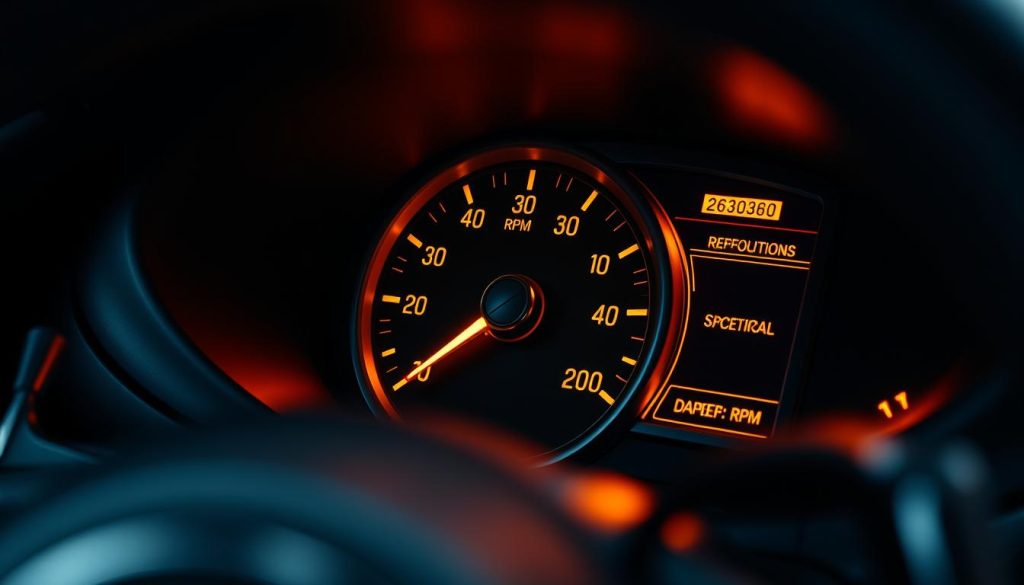
Effects on Engine RPM and Power Delivery
Using D3 can lead to an increase in engine RPM, as the transmission holds the gear longer, keeping the engine in a higher RPM range. This can be particularly useful when driving uphill or carrying heavy loads, as it provides more power and control.
The increased RPM can also result in more immediate power delivery, making the vehicle feel more responsive. However, this comes at the cost of potentially increased fuel consumption due to the higher engine workload.
Fuel Consumption Considerations
Engaging D3 can impact fuel consumption, typically increasing it due to the higher RPMs and the engine working harder. However, the extent of this impact can vary depending on driving conditions.
In certain situations, such as driving in hilly terrain, the increased control and power from D3 might actually lead to more efficient driving habits, potentially offsetting some of the increased fuel consumption.
Impact on Transmission Longevity and Maintenance
The use of D3 can also have implications for transmission longevity. By limiting gear shifts, D3 reduces the wear on certain transmission components, potentially extending its lifespan.
However, frequent use of D3, especially under heavy loads or in extreme conditions, may also lead to increased stress on other parts of the transmission. Regular maintenance is crucial to ensure the longevity of the transmission, regardless of D3 usage.
To maximize the benefits of D3 while minimizing potential drawbacks, it’s essential to use it judiciously and maintain your vehicle according to the manufacturer’s recommendations.
Troubleshooting D3-Related Issues in Honda Civics
Troubleshooting D3-related issues in your Honda Civic requires a systematic approach to identify and resolve transmission problems. The D3 gear is an essential component for specific driving conditions, and understanding its operation and potential issues is crucial for maintaining your vehicle’s performance.
Common Problems and Solutions
Several common issues can occur with the D3 gear in Honda Civics, including slipping or hesitation between gears, unusual noises, and failure to engage or disengage properly. To address these problems, it’s essential to understand their causes and apply the appropriate solutions.
- Slipping or Hesitation: This could be due to low transmission fluid levels or dirty fluid. Checking and maintaining the transmission fluid is a crucial first step.
- Unusual Noises: Grinding or clunking noises may indicate worn-out or damaged transmission components. Inspecting the transmission for any signs of wear or damage is necessary.
- Failure to Engage/Disengage: Issues with the gear selector or transmission solenoid could be the cause. Diagnostic tests may be required to identify the specific problem.
Warning Signs to Watch For
Being aware of the warning signs that indicate potential D3-related issues can help prevent more severe problems. These signs include:
- Unusual vibrations or shaking when driving in D3
- Dashboard warning lights illuminating
- Unusual smells, such as burning, from the transmission
When to Consult a Mechanic
If you notice any of the warning signs or experience persistent issues with the D3 gear, it’s advisable to consult a professional mechanic. They can provide a detailed diagnosis and recommend the necessary repairs.
| Issue | Possible Cause | Recommended Action |
|---|---|---|
| Slipping or Hesitation | Low/Dirty Transmission Fluid | Check and Change Transmission Fluid |
| Unusual Noises | Worn/Damaged Transmission Components | Inspect and Replace Damaged Components |
| Failure to Engage/Disengage | Faulty Gear Selector/Solenoid | Diagnostic Tests and Repair/Replacement |
Conclusion
Understanding the D3 gear on your Honda Civic is crucial for optimizing your driving experience. As discussed, D3 is a valuable feature in the Honda Civic’s transmission system, offering drivers more control over their vehicle’s performance in various driving conditions.
The benefits of using D3 include enhanced engine braking, particularly when driving downhill, and improved control when towing or carrying heavy loads. By limiting the transmission to lower gears, D3 helps reduce wear on the brakes and provides a more stable driving experience.
In summary, the D3 gear is an essential component of the Honda Civic’s transmission, providing drivers with the flexibility to adapt to different driving situations. By understanding how to effectively use D3, you can improve your vehicle’s performance, safety, and overall driving dynamics, making the most of your Honda Civic’s capabilities.
FAQ
What does D3 mean on a Honda Civic?
D3 is a gear position on the Honda Civic’s automatic transmission that limits the gear shifts to the lower gears, typically used for driving on steep hills, towing, or in adverse weather conditions.
How does D3 affect engine braking?
When D3 is engaged, the engine braking mechanism is activated, helping to slow down the vehicle by utilizing the engine’s resistance, particularly useful when driving downhill.
Can using D3 improve fuel economy?
Using D3 can potentially improve fuel economy in certain situations, such as driving in hilly or mountainous terrain, by reducing the need for frequent acceleration and braking.
Is it safe to use D3 in city driving?
While D3 can be used in city driving, it’s not always necessary unless you’re driving in heavy traffic or on steep hills. Using D3 unnecessarily can lead to increased engine RPM and potentially decreased fuel efficiency.
How does D3 impact transmission longevity?
Using D3 can help reduce wear on the transmission by limiting gear shifts and reducing the load on the transmission, potentially leading to longer transmission life.
What are the benefits of using D3 when towing a trailer?
When towing a trailer, using D3 can help improve control and stability by limiting gear shifts and providing additional engine braking, making it easier to manage the vehicle and trailer.
Can D3 be used in all Honda Civic models?
Most Honda Civic models come equipped with an automatic transmission that includes a D3 gear position. However, the specific functionality and availability of D3 may vary across different model years and trim levels.
What are the signs that indicate a problem with the D3 gear?
Signs of a problem with the D3 gear include slipping or hesitation when shifting, unusual noises, or the transmission not engaging D3 properly. If you experience any of these issues, it’s recommended to consult a mechanic.
